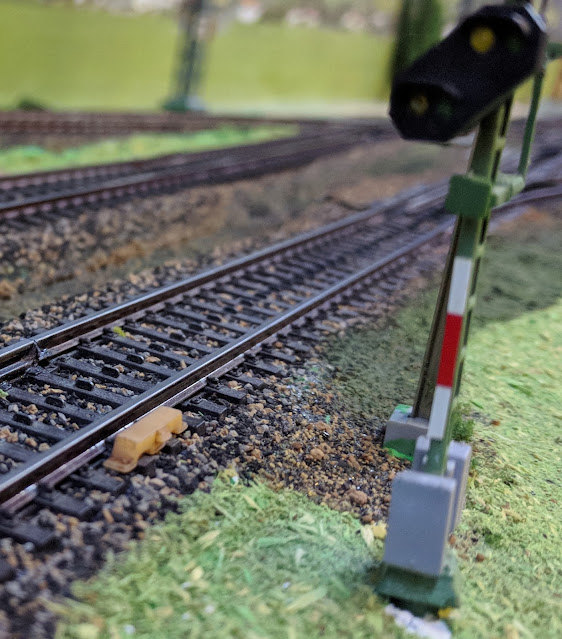Typically these placed ahead of, and at main signals. They are also placed near level crossings. There are three frequencies used, and each frequency indicates a different type of speed check.
The first one encountered is usually at the distance signal, a 1000Hz signal tells the train driver that a main signal is being approached. A tone sounds, and the driver must press a button to acknowledge the warning within 4 seconds. If not, the train is slowed.
Then, about 250m before the main signal, a 500Hz Indusi will trigger a speed check of the train to ensure that it has slowed sufficiently in order to stop at the main signal.
The third one, at 2000Hz, is placed at the main signal. If this one is active when a train passes, then the train is stopped automatically.
This is what they look like, and the top is usually painted yellow:
Indusi prototype image by WHell reproduced under CC BY-SA 3.0
Every distant signal needs one...
I thought I would print some using my 3D printer but the files I found online were very disappointing, so I designed one from scratch.
and printed them out. I then weathered them with a rust color...
Here my BR 111 S-Bahn loco passes its Indusi transponder over an Indusi inductor
And one some distance before a main signal
And at each main signal (background and distance signal in foreground)







